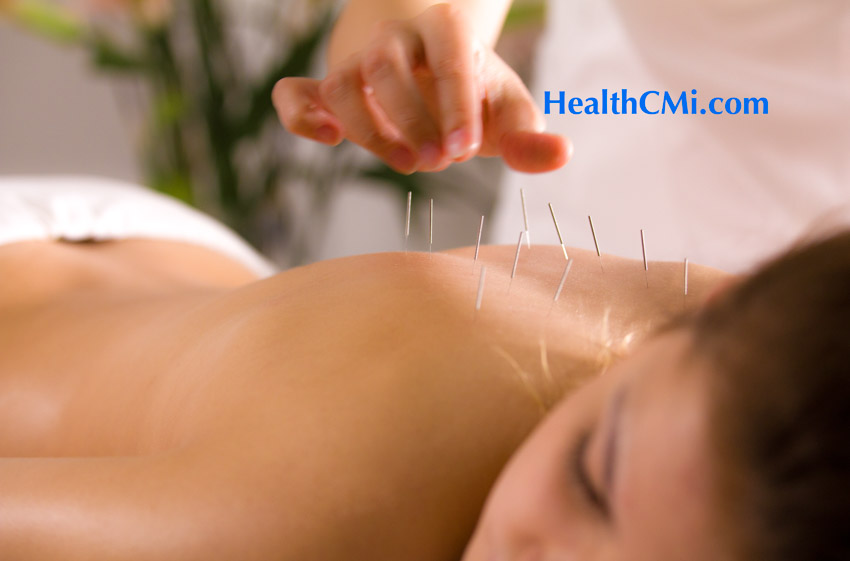Acupuncture integrated with moxibustion is effective for relieving symptoms and reducing inflammatory factors in patients with rheumatoid arthritis (RA). Researchers at the Affiliated Hospital of Liaoning University of Traditional Chinese Medicine investigated the effectiveness of routine biomedical treatment and that of warm needle acupuncture combined with routine care. The results showed that warm needle acupuncture administered in an integrated protocol with biomedicine outperformed routine care monotherapy by 12.5%. [i]
The study included 112 RA patients. The patients were categorized into a warm needle acupuncture group and a drug control group, with 56 cases in each group. In the control group, there were 23 males and 33 females. Age range was 28–57 years, with a mean age of 42 ±5 years. Course of disease ranged from 3–8 years, with a mean disease duration of 5.27 ±1.48 years. The average duration of disease was 5.27 ±1.48 years. In the warm needle acupuncture group, there were 25 males and 31 females. Age range was 30–60 years, with a mean age of 43 ±5 years. Course of disease ranged from 4–9 years, with a mean duration of 5.14 ±1.74 years. No statistical significance was observed between the two groups.
Clinical efficacy, TCM symptom scores, Disease Activity Score (DAS28), ultrasonography 7 (US7), and levels of TNF-α, E2(PGE2), and IL-6 were recorded and assessed after treatments were administered for three months. The total efficacy rate in the warm needle acupuncture group was 94.6%, and that of the control group was at 82.1%.
For both groups, the TCM (Traditional Chinese Medicine) symptom scores, DAS28, and US7 declined considerably, but the decreases in the warm needle acupuncture group were more significant. The same pattern could be seen in levels of TNF-α, E2(PGE2), and IL-6. The research shows that warm needle acupuncture can effectively relieve clinical symptoms, promote joint mobility, downregulate inflammatory levels, and restrict the progression of RA. The results demonstrate that the integration of warm needle acupuncture into conventional patient treatment protocols improves outcomes.
Acupuncture Treatment
The drug control group was administered 10 mg methotrexate tablets, once a week for 12 weeks. The other group received warm needle acupuncture in addition to the weekly methotrexate tablets. Three moxa pieces (2 cm) were applied to the needle ends after a deqi sensation was obtained at the points (bilaterally) listed below.
- BL13 (Feishu)
- BL20 (Pishu)
- BL23 (Shenshu)
- BL18 (Ganshu)
- BL11 (Dazhu)
Acupoint Highlight
The acupoint prescription includes standard back-shu (bei-shu) points of the lungs, spleen, kidneys, and liver. In addition, BL11 (Great Shuttle) was added. BL11 is located 1.5 cun lateral to the lower border of the spinous process of T1 (first thoracic vertebra). BL11 is the meeting point of the bladder channel with the small intestine, triple burner, and gallbladder channels and the governing vessel (Du Mai). BL11 is also the Hui-meeting point of the bones and a sea of blood point. BL11 benefits the bones, expels external pathogenic factors, and regulates wei qi (defensive qi). BL11 regulates lung qi and alleviates coughing. Learn more about this and other acupoints in HealthCMi acupuncture CEU courses online.
Another independent study conducted by researchers in Zhejiang Province demonstrated similar results. [ii] In this study, 64 patients with rheumatoid arthritis were randomized into an acupuncture group and a control group. The control group was given methotrexate and folic acid. The acupuncture group was given acupuncture treatment in addition to pharmaceuticalsmethotrexate.
The number of pressure pain joints, number of swollen joints, duration of morning stiffness, disease activity score-28 (DAS28), erythrocyte sedimentation rate (ESR), serum C-reactive protein (CRP), synovial thickness and synovial blood flow signal grading of wrist joints, and serum CCL19 and ANGPTL2 levels were compared between the two groups before and after treatment. Upon completion of the treatment, all indicative figures showed improvement in both groups, with the acupuncture group experiencing greater improvements. The subjective and objective evidence demonstrates that acupuncture improves outcomes when combined with pharmaceutical therapy.
References:
[i] Xu Dan, Dong Xun, Clinical Efficacy of Warm Needling for Rheumatoid Arthritis and Its Effects on Inflammatory Factors, Shanghai Journal Acupuncture & Moxibustion, Oct 2021, Vol 40, No. 10.
[ii] Ruan Lingjuan, Yang Xiaofei, Chen Chunyan, Effect of Warm Needling Moxibustion on the Ultrasonic Manifestation of Joints and Serum CCL19 and ANGPTL2 in Patients with Rheumatoid Arthritis, Shanghai Journal of Acupuncture, 2022, January, Volume 41, Issue 1.



